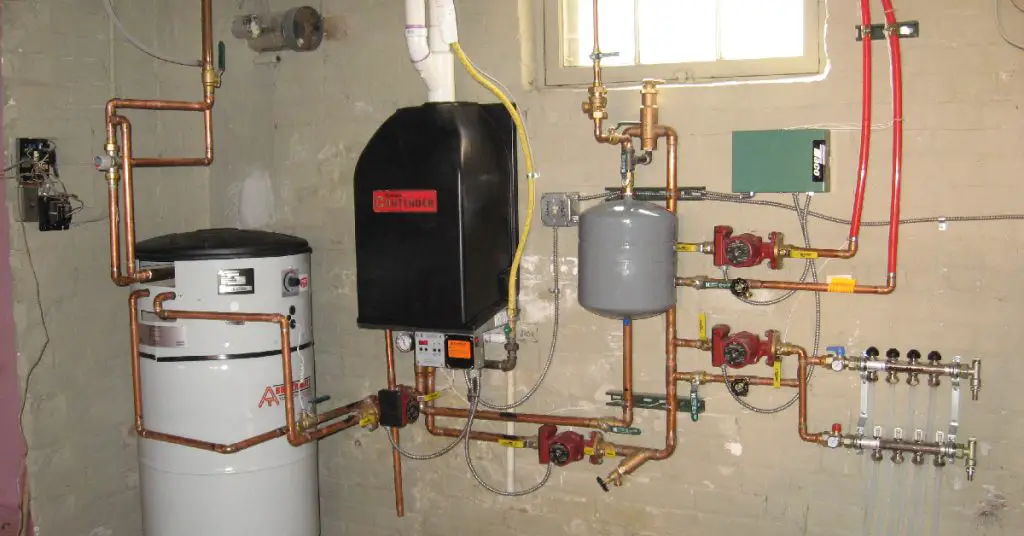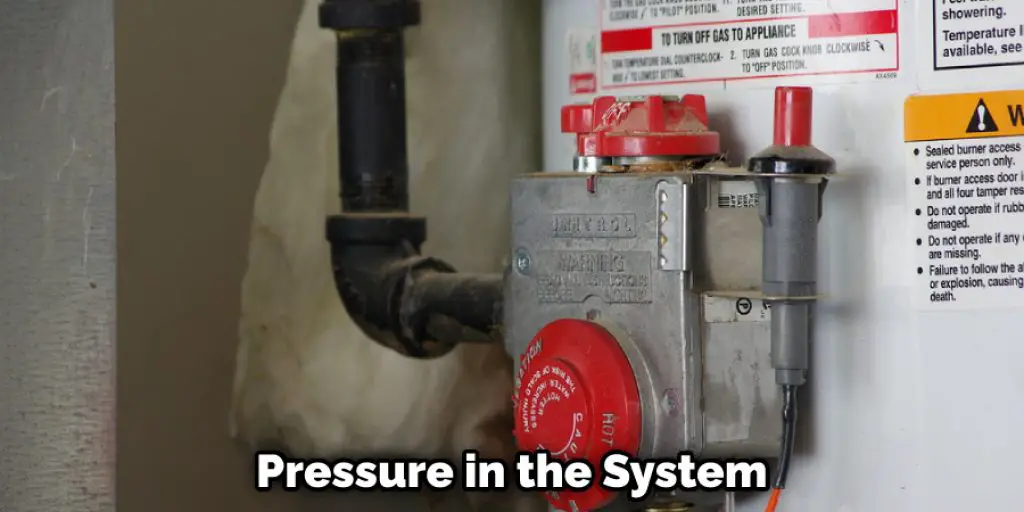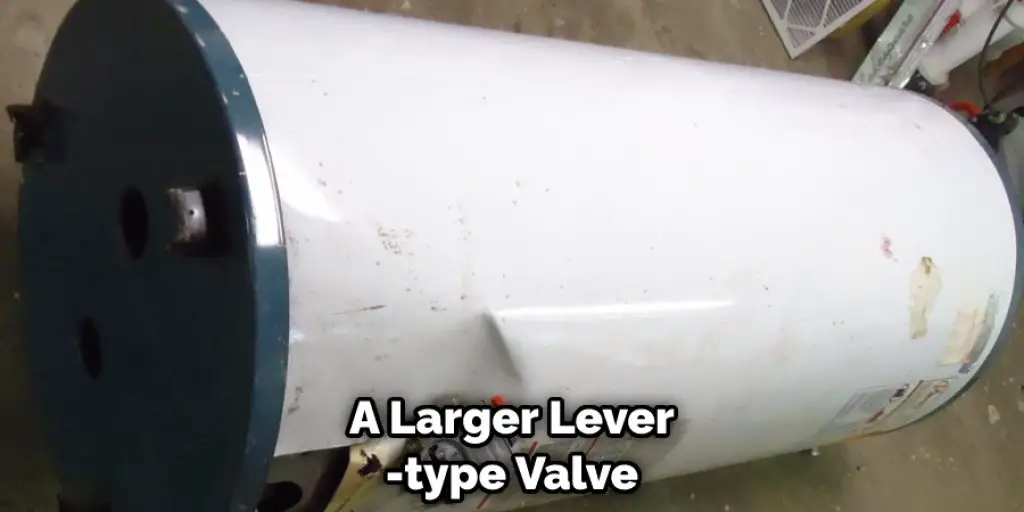How to Drain Expansion Tank on Water Heater
Drain expansion tank on the water heater is not a difficult task, but it is crucial to do correctly. This how-to article will show you the best way how to drain expansion tank on water heater. Keep in mind that draining the expansion tank should only be done when there is a problem with the tank or when replacing the water heater. Never empty the tank unless there is a specific need for doing so. Keep reading to learn more.

It is always best to follow the manufacturer’s instructions when draining the expansion tank on the water heater. However, if you don’t have the manual or can’t find it, the process is still relatively simple. Many expansion tanks have a small valve on the bottom that can be opened to drain the tank. If your expansion tank doesn’t have this valve, you’ll need to open the pressure relief valve to release the water.
What Is a Thermal Expansion Tank?
A thermal expansion tank is a small tank used to help regulate the water pressure in a home’s or business’s plumbing system. The tank is typically installed near the water heater, and it helps to ensure that the water pressure in the system remains at a constant level. As the name suggests, the tank is designed to accommodate the expansion of water as it heats up.
When the water in the system heats up, it expands and pressures the pipes. This can cause damage to the pipes or even cause them to burst. The expansion tank helps relieve this pressure by providing a place for the expanded water to go. This can help extend the plumbing system’s life and prevent costly repairs.
Why Do I Need a Thermal Expansion Tank?
A water heater expansion tank is a small tank that helps to protect your home’s water heater from over-pressurization. Over pressurization can occur when too much hot water is in the system. When this happens, the expansion tank allows the excess water to expand into it, rather than causing the pressure in the system to increase and potentially cause damage.

A Stepwise Guide on How to Drain Expansion Tank on Water Heater
Step 1: Determine What Type of Tank You Have
There are two common types of expansion tanks- diaphragm and bladder. The former type uses a rubber diaphragm to separate the air in the tank from the water, while the latter contains a rubber or plastic bladder that does the same thing. To determine which type you have, take a look at your tank.
If there is a large metal plate on top of the tank with bolts going around it, chances are you have a diaphragm expansion tank. If not, then you likely have a bladder expansion tank.
Step 2: Shut Off the Water Supply to Your Tank
The first step to draining your expansion tank is to shut off the water supply that’s going into it. Next, locate the shut-off valve on the incoming water line, which is typically located near the top of the tank, and turn it clockwise to close it.
Step 3: Open a Faucet in Your Home
Once the water supply to your expansion tank has been shut off, you’ll need to open a faucet in your home to allow the pressure in the system to equalize. Doing this will make it easier to drain the expansion tank later on.
Step 4: Find the Drain Valve on Your Tank
The next step is to find the drain valve on your expansion tank. This is usually located near the bottom of the tank. If you have a diaphragm expansion tank, the drain valve will be a small petcock valve. The drain valve will likely be a larger lever-type valve for a bladder expansion tank.

Step 5: Drain the Water from Your Tank
Once you’ve located the drain valve, it’s time to start draining the water from your expansion tank. If you have a diaphragm expansion tank, open the petcock valve by turning it counterclockwise. For a bladder expansion tank, open the lever-type valve by pushing down on it.
Allow all water to drain out of the tank until only air is left. Once this has been accomplished, close the drain valve and move on to the next step.
Step 6: Refill Your Expansion Tank with Air
The final step is to refill your expansion tank with air. This can be done using an air compressor or manually pumping air into the tank with a bicycle pump. Once the tank has been refilled with air, close the valve or petcock that you used to do so. Your expansion tank is now drained and ready for use!
Tips and Warnings:
Tips:
1. Turn the power off to your water heater before beginning this project.
2. Always use caution when working with hot water. Use gloves and eye protection if necessary.
3. Have a bucket and rags ready to catch any water that may drip from the expansion tank while draining it.
4. If your expansion tank is mounted on the wall, you may need a stool or ladder to reach it.
5. Follow the manufacturer’s instructions for your specific type of expansion tank.
Warnings:
1. Never work on a water heater while it is turned on.
2. Hot water can cause burns. Use caution and wear gloves and eye protection if necessary.
3. Always have a bucket and rags ready to catch any water that may drip from the expansion tank while draining it.

4. Expansion tanks can be mounted on the wall or floor. If your expansion tank is mounted on the wall, you may need a stool or ladder to reach it.
What if My Expansion Tank Is Full of Water?
An expansion tank is an integral part of any hot water heating system. It helps to ensure that the system can handle fluctuations in water pressure, preventing damage to pipes and other components. However, if the expansion tank is allowed to fill with water, it can become a significant problem. The extra weight of the water can cause the tank to rupture, leading to a leak in the system.
In addition, the water can prevent the tank from expanding as intended, leading to a build-up of pressure within the system. If you suspect that your expansion tank is full of water, it is essential to have it inspected by a professional as soon as possible. Trying to empty the tank on your own could result in serious injury.
Do You Need to Bleed an Expansion Tank?
If your water heater is over 12 years old, you may need to bleed the expansion tank. This process releases the air accumulated in the tank and prevents the water from becoming too hot. You will know it is time to bleed the expansion tank when the water temperature in your home becomes too hot or when the pressure relief valve starts leaking.
Here Are the Steps You Need to Take to Bleed an Expansion Tank:
1. Turn off the power to your water heater.
2. Find the cold water inlet on your water heater. This is usually located near the bottom of the unit.
3. Locate the expansion tank and find the valve that controls air flow into the tank. This valve is usually located near the top of the tank.
4. Slowly open the valve on the expansion tank to release the air. You may hear a hissing noise as the air escapes.
5. Close the valve when water starts flowing from it.
6. Turn on the power to your water heater and check the water temperature. It should be back to normal now. If not, you may need to repeat this process or call a professional for assistance.
Conclusion
Always consult your water heater’s owner’s manual before attempting any repairs. If you are not comfortable with the task at hand, it is best to call a professional to do the job for you. By following these simple steps on how to drain expansion tank on water heater, you can quickly drain the expansion tank on your water heater and avoid any unwanted surprises down the road.
You Can Check It Out to Make Tankless Water Heater Hotter








